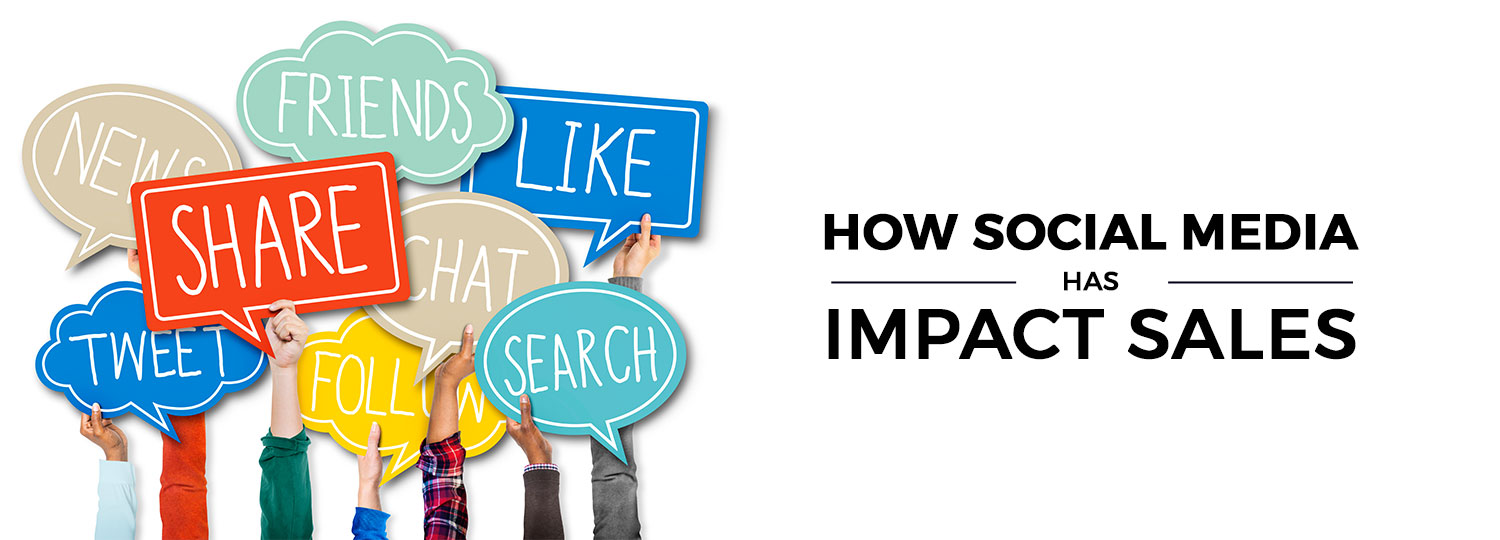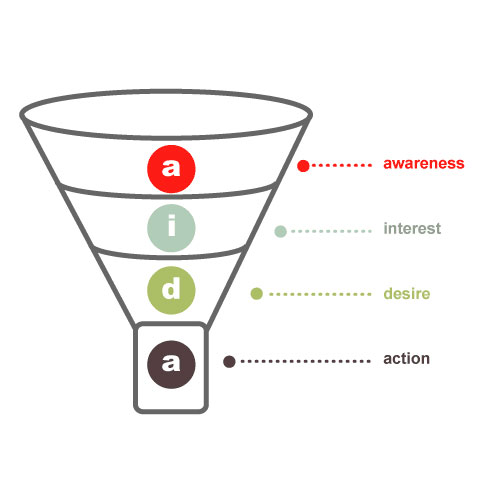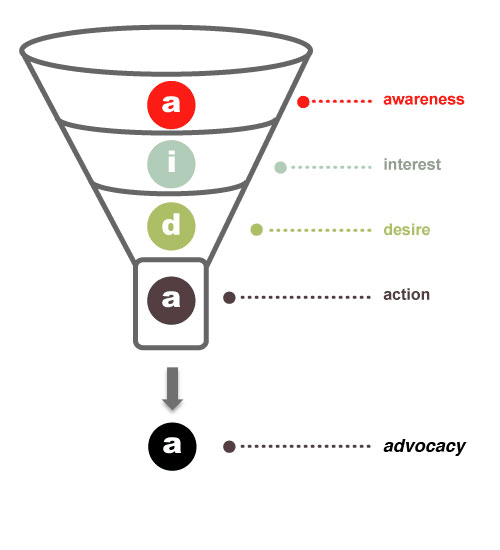
Do direct clicks from a social media site result in sales?
How much time are you spending on Twitter, Facebook and Google+? Can you tell if it’s helping sales and impacting your brand?
That’s where the Sales Funnel comes into play.
Table of Contents
The Traditional Sales Funnel

Traditional Sales Funnel (AIDA) – Since the early 1960’s, AIDA has frequently been illustrated in the diagrammatic format of a funnel, indicating that a larger quantity of potential purchasers become aware, then a smaller subset becomes interested, and so on.
Most marketers and sales personnel use the concept of the Sales Funnel as a model for their sales process. It describes a process of generating leads, engaging and qualifying them, converting them into sales, then retaining them.
Awareness
Letting prospective customers know you exist. This could be achieved by creating adverts on television, press, print, radio and many other forms of traditional media.
Interest
Getting prospects interested in your products/services. Highlighting the features and benefits of your product/service would generate interest from customers to find out more about.
Desire
Giving prospects good means to purchase your products/services. Coming up with exclusive promotions, vouchers and offers would create a greater desire for the prospects to buy the product/services.
Action
A customer takes a positive step such as call, email, and even purchase.
Social Media Sales Funnel
As with the traditional sales funnel, a business that used social media also has to go through the AIDA sales process. The Social Media sales funnel can be easily segregated into five segments:
Awareness (Reach)
In order to generate awareness on the social media space, businesses need to source and gather as many quality followers, fans or subscribers to their social media page. When brands are trying to build up their social media account, one of the best approaches is followed people who are relevant to the business. These people who see your followers and are likely to reciprocate. However, finding relevant people can be hard.
Interests (Engage)
With a group of followers on hand, businesses will have to deliver real value and apply creative ways to engage customers. Taking the prospects through a series of interactions by providing interesting, educational, or valuable content, responding to their queries in a tactful and timely manner. By doing this, businesses are nurturing their prospects and heightening their interest to the brand. However, creating good content is difficult. Determining the type of content that is appropriate for the business and its audience is not easy either.
Desire (Offer)
With heightened interests, a business can start planning offers or promotions exclusively for its followers or subscribers on social media. This is when brands can demonstrate that what they are selling will satisfy desired needs. The right offer (with the right price), with proof confirming the quality of the product/service, will enhance their desire to purchase.
Action (Convert)
To convert the prospects to a customer by creating a landing page with strategic placement of graphics, text and button, well-crafted message, as well as a clearly specified call to actions. Once the prospects have signed up or purchased, they would have successfully convert them to real actual customers. After the prospects transform into paying clients, it will prove the brand has used it social media channels successfully. One of the returns on investment (ROI) of social media marketing is converting the leads into sales. But it is relatively challenging to measure how many people convert to customers.
Advocacy (Sharing)
Besides placing emphasis on Awareness, Interest, Desire, and Action, there is an additional step, which is beneficial to a business when using the Social Media sales funnel, called Advocacy.
By leveraging on Social Media, this sales process can be extended to the point of turning the customer into an advocate for your product. When customers engage actively and spread the word, they become great ambassadors who can continue the brand’s sales cycle automatically.
The word-of-mouth that advocates spread is powerful. The more advocates one has developed; the sooner one can reduce the cost per user acquisition.
Conclusion
Social media has become the most important marketing initiative today because it has actually changed (or adapted) the “Sales Process” into the “Buying Process”. With brand advocates talking with peers sharing advice and comments about all of their purchases and experiences, this has created a desire for the followers and thus shortens the path of conversion. While the sales process through social media is clearly a longer one, it also yields a greater frequency of purchase and increased awareness of the brand to the customer’s networks.


Thanks for blogging about this. Its an interesting point about extending the traditional AIDA marketing funnel and including the advocacy component. Perhaps an interesting “mirror image” would be to append a conical hailer at the end so that advocates can help to “broadcast” it to their respective networks. As such, there are two funnels at work here – one to channel business in and one to spread the word out.
Unfortunately, I don’t see many companies embracing the idea above. Many companies run their social campaigns these days primarily through promotions. Advocacy is linked to contests and prizes as opposed to transactions (involving money). People are recruited as “advocates” to help “spread the word” so that they can win a prize if they could spread it to the widest possible audience. There is a lot of campaign gamification going on which makes it difficult to truly discern between true evangelism or “incentivised” ones.
What would be interesting would be to see if recruiting 10,000 Facebook fans would lead to increase in actual revenue and sales. That would be the true test I suppose.